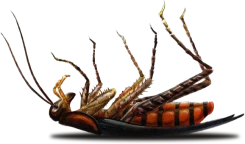Termite Prevention Tips
Do I need to worry about termites?
Just because you’ve never seen termites, it doesn’t mean your home is termite-free. Subterranean termites live in underground colonies and their tunnels penetrate as deep as nine feet into the earth. Termites can enter your home through gaps as small as 1/32 of an inch. Once inside, termites rarely break through the surface of the wood, hollowing it out from the inside. Structural damage may be totally hidden from view.
Should I purchase termite control if there's no evidence of an infestation?
Yes! Termites are responsible for an estimated $5 billion of damage each year in the United States. Preventive termite programs can resolve hidden infestations and prevent future problems and are offered at a cost savings, adding to the value of the program.
What are the Warning Signs of an Active Infestation?
Termite swarmers sometimes alert homeowners to an infestation, however it may take up to four years for a colony to produce swarms. Swarms generally last for less than an hour once a year. Mud tubes leading up from the ground are another indication of an active infestation. These are generally located along the foundation of a building. Finally, wood damage may be an indication of an active infestation, depending on its location and the presence of live termites.
I think I have Drywood termites. Are they different?
Yes, drywood termites, including C. brevis and I. minor, are different than subterranean termites. Cryptotermes brevis is the most widespread drywood termite in the tropics worldwide and is common throughout Florida. Drywood termites live entirely within the wood members they infest. Curative treatment methods include fumigation and spot treatments, depending on the infestation. Wood replacement is another option if the infestation is isolated to a wood member that may be easily replaced.
Ways that you can help to prevent a subterranean termite infestation:
- Remove stumps, roots and similar materials from the building site and from the areas immediately adjacent to your home.
- Eliminate any wood contact with the soil. Any wood that contacts the soil, such as fence posts, should be commercially pressure treated and not contact the house.
- Prevent dead air pockets with ventilation openings in foundations. Proper ventilation keeps the ground dry and conditions unfavorable for termites.
- Create a space between your home and any plantings or mulch. Avoid landscaping or irrigation within two feet of the foundation.
- Schedule regular, annual inspections.


Why Choose Us?
Providing Reliable Pest & Wildlife Solutions Since 1939
At Home Paramount Pest Control, we have been dedicated to delivering reliable pest and wildlife management solutions for over 80 years. Our long-standing presence in the industry speaks volumes about our commitment to excellence and customer satisfaction. When you trust our team, you can always count on:
- Customized solutions to suit your specific needs
- Same-day service availability for pest infestation emergencies
- High-quality green products that are safe for the environment
- Complimentary pest inspections
- Affordable financing solutions tailored to your budget
Call us at 888-888-4663 to get started with a free pest inspection for your property today!
Learn More

